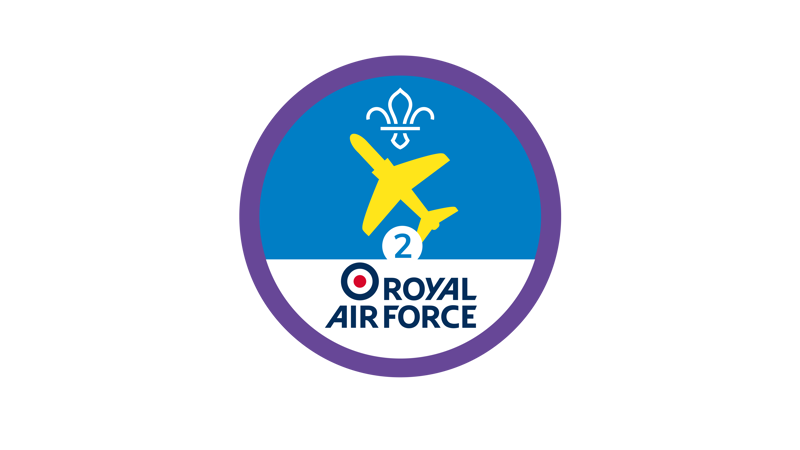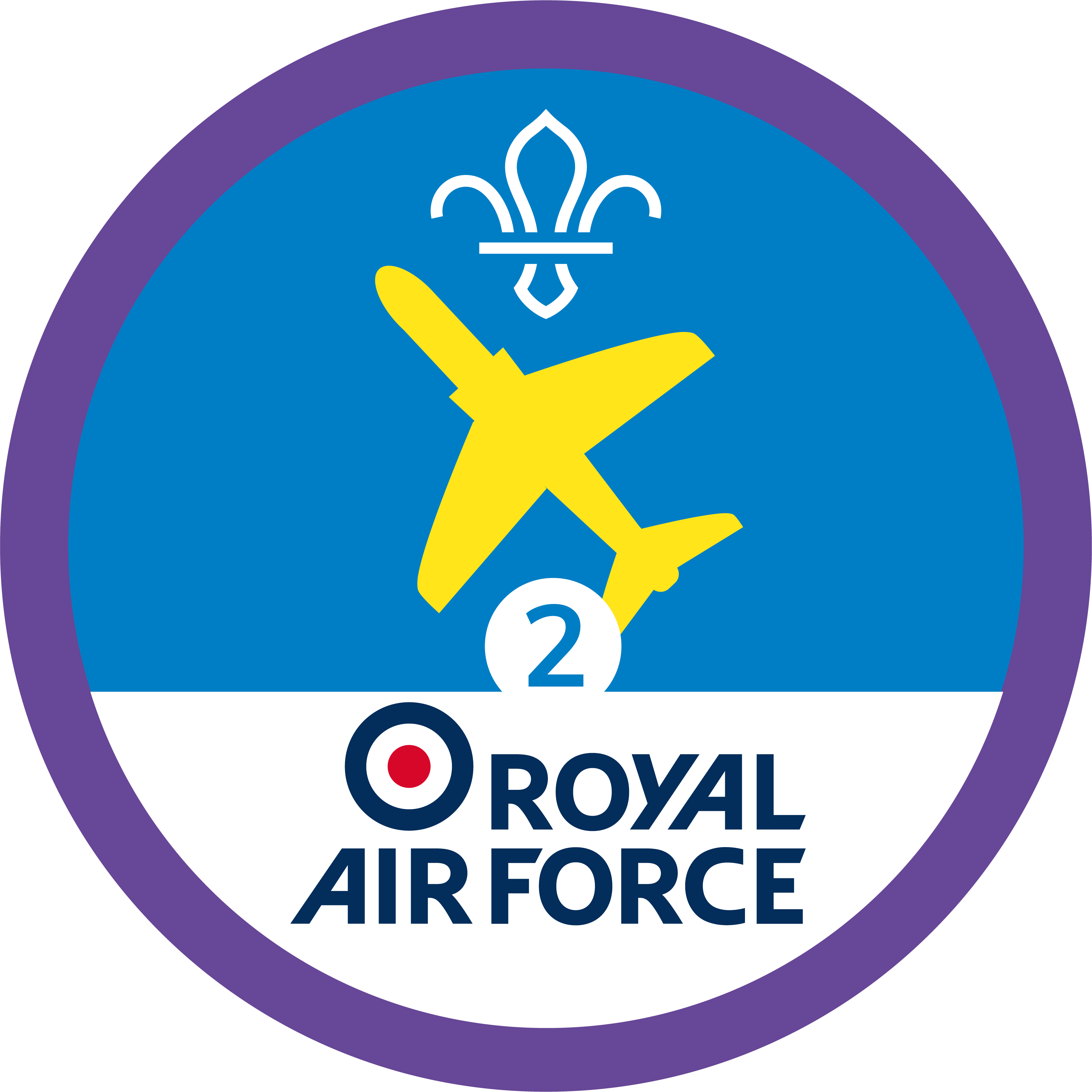
Make an aircraft poster
You’ll need
- Scissors
- Coloured pens or pencils
- Pens or pencils
- Glue sticks
- Pictures of various aircraft
- Aircraft-related information sheets, leaflets, magazines
- A3 paper
Before you begin
- Use the safety checklist to help you plan and risk assess your activity. Additional help to carry out your risk assessment, including examples.
- Make sure all young people and adults involved in the activity know how to take part safely.
- Make sure you’ll have enough adult helpers. You may need some parents and carers to help if you’re short on helpers.
Planning this activity
- Find, print and cut out pictures of different types of aircraft. You’ll need at least six different types and enough pictures so that people can have at least one picture of each aircraft.
- To collect the images, you could use images from leaflets or aircraft magazines. If you’re doing this activity after visiting an airfield, you could collect leaflets or take photographs there.
- You could ask everyone to bring in pictures of aircraft and find out some facts about them.
- You may want to print out some general fact or information sheets about the different types of aircraft.
Make your posters
- Gather everyone in a group and explain you’re going to learn about different aircrafts, then make a poster to share information about them.
- Ask everyone to get into small groups, then give out the images plus any extra information, such as leaflets and magazines.
- Explain that everyone has images of different aircraft types. Then, one by one, they should call out the names of the aircraft. Everyone should find the correct picture and hold it up.
- Check that the groups can correctly identify each type of aircraft. Ask if anyone knows any facts about them or has even flown in one. You could run a quick quiz and have people hold up the different aircraft pictures to answer.
- Everyone can use a paper, card, craft materials coloured pens, glue sticks and scissors to create a poster to help other people learn about one of, or all, the six different aircraft. For example, they could cut out and stick on (or draw) pictures, label them, then add facts.
- If they can, people could add extra pictures or drawings, such as clouds or pilots. If they’ve access to a safe internet device, they could do some research online.
- People may want to work in pairs or small groups.
- When everyone’s finished, ask if anyone wants to share their posters to each other and is happy to talk about what they found out.
Helicopters
- They have at least two blades which spin around really fast to lift up the helicopter.
- They are sometimes called ‘choppers’, because their blades make a chopping sound when they are spinning.
- Occasionally emergency services use them, as they need less space to land than a plane but can carry a lot of equipment and people.
- They are really noisy.
Hot air balloons
- They are the oldest type of aircraft capable of carrying people.
- They are believed to have first been used by the pre-Incan Nazcas in Peru, more than 2,000 years ago.
- They are filled up with hot air and/or light air gases, which lift them up.
- The heated air is kept inside the balloon by its fabric ‘envelope’.
- They travel using the direction of the wind.
Gliders
- Like birds, gliders can soar for great distances and to great heights.
- The world’s first successful aeroplanes were all gliders.
- The first successful glider was built by the Wright Brothers, Orville and Wilbur Wright.
- On 17 December 1903, Orville Wright became the first person to fly a motor-powered aircraft.
Airships
- They use hot air and/or light gases to lift up.
- They also have engines and propellers to help them fly and steer direction.
- There are three different types of airships: non-rigid, semi-rigid, and rigid.
- Non-rigid or semi-rigid airships use only air to keep their shape, like a balloon.
- Rigid airships have a frame inside to keep their shape.
Fighter planes
- They are used by the military and armies.
- They can reach speeds of 1,600 miles per hour.
- They are designed to be light and smooth, so they can fly very quickly though air.
Airliner
- They’re large planes used to carry passengers around the world.
- The largest airliners are called wide-body jets – they normally have two aisles inside them.
- Smaller airliners are called narrow-body jets – they normally have a single aisle.
Reflection
This activity helped everyone to recognise the wide variety of aircraft. Everyone should talk about how they created their posters and decided what to put on them. If anyone knows additional information about their aircraft, they could share some more facts with the group. For example, has anyone been on or seen any of the aircraft they included on their poster? What’s the most unusual aircraft anyone has seen?
Safety
All activities must be safely managed. You must complete a thorough risk assessment and take appropriate steps to reduce risk. Use the safety checklist to help you plan and risk assess your activity. Always get approval for the activity, and have suitable supervision and an InTouch process.
- Scissors
Supervise young people appropriately when they’re using scissors. Store all sharp objects securely, out of the reach of young people.
- Glue and solvents
Always supervise young people appropriately when they’re using glue and solvent products. Make sure there’s plenty of ventilation. Be aware of any medical conditions that could be affected by glue or solvent use and make adjustments as needed.
- Online safety
Supervise young people when they’re online and give them advice about staying safe. Take a look at our online safety or bullying guidance. The NSPCC offers more advice and guidance, too. If you want to know more about specific social networks and games, Childnet has information and safety tips for apps. You can also report anything that’s worried you online to the Child Exploitation and Online Protection Command. As always, if you’ve got concerns about a young person’s welfare, including their online experiences, follow the Yellow Card to make a report.
- The posters could be created using computers or laptops instead. People could work on their own or in pairs instead of groups.
- To make it easier, people can decorate their posters without adding facts.
- To make this activity easier, you could pre-cut any pictures out for people to use or use stickers instead.
- Make sure there’s a role for everyone. If anyone doesn’t want to make the poster, could they help do research or cut out images for people to use?
- If someone needs support in writing down their ideas or drawing, give them the opportunity to work with someone else to help them where needed. A friend, adult volunteer or young leader could write for them.
- People may struggle to hold pens or pencils to write with. You could use pencil grips to help people who may need some support with this.
- If needed, let people be in bigger groups to make sure everyone’s supported in taking part in the activity. A young leader could join a group to help people to take part, too.
- You could print out some information or facts for people to stick on.
- Make sure to print out any information large enough for everyone to be able to read it. If anyone’s colour-blind or dyslexic, you may need to use different colour paper to help make reading easier for them.
All Scout activities should be inclusive and accessible.
- If you enjoyed this activity, you could use a model kit or recycled material to build an aircraft, then paint and decorate it. You could also visit an airfield or air museum to see some of the aircraft used in the posters up close.
- If anyone can a special interest in aircraft, they could make a presentation about their favourites to the group or help lead the introduction.
